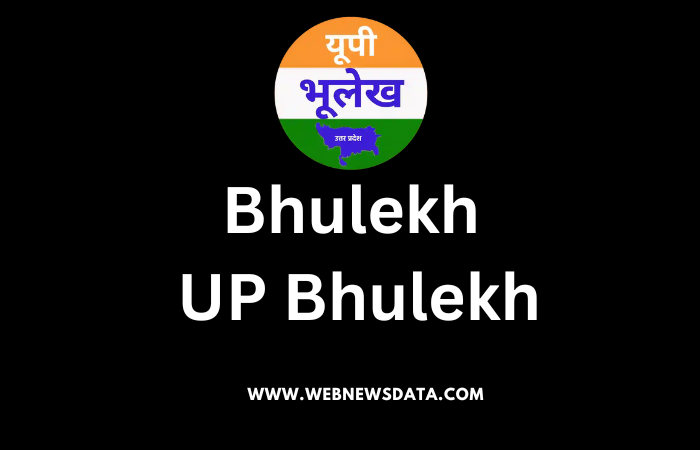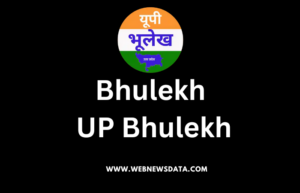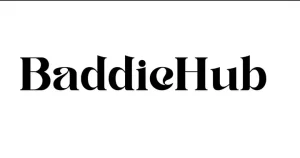What is UP Bhulekh Portal and How Can We Use it ?

upbhulekh
What is Bhulekh Portal ?
The “Bhulekh” portal in India offers land records online. It is usually utilized to check land information such as possession, survey numbers, and property details. The portal differs according to state in India because every state has its own website for handling land records.
To view land records online for a particular state, you have to go to the concerned state’s Bhulekh portal. A few instances are:
• Uttar Pradesh: https://upbhulekh.gov.in/
• Maharashtra: https://bhulekh.mahabhumi.gov.in/
• Rajasthan: https://apnakhata.raj.nic.in/
• Bihar: https://biharbhumi.bihar.gov.in/
Let me know if you need the Bhulekh portal for a specific state!
What is UP Bhulekh Portal ?
UP Bhulekh is the state’s online land record management system in Uttar Pradesh, India. It is one of the efforts made by the government of Uttar Pradesh to give digital access to land records, providing citizens with a simple and transparent means of accessing information regarding property.
UP Bhulekh Portal: https://upbhulekh.gov.in/
Key Features of UP Bhulekh:
Access to Land Records:
Citizens can see and authenticate crucial land information such as Khasra Number, Khatoni Number, Land Owner, Land Area, and Revenue Records online.
Digitized Land Data:
UP Bhulekh digitized old land records, which were kept in a manual format earlier. It facilitates ensuring accuracy and authenticity of the data.
User-Friendly Interface:
The portal is user-friendly, and anyone, including those with minimal technical expertise, can easily navigate and access land information.
Verification of Property Ownership:
The portal facilitates verification of land ownership and transparency, minimizing fraudulent property deals and disputes over ownership.
Real-Time Updates:
The system is updated frequently, offering the most current data and minimizing the likelihood of outdated or inaccurate land records.
Accessibility:
UP Bhulekh is accessible to the citizens from any place and at any time without having to personally visit government offices.
How to Access UP Bhulekh:
Website: UP Bhulekh Portal : https://upbhulekh.gov.in/
Steps to Check Land Records:
Visit the official website.
Choose the district, tehsil, and village.
Enter the Khasra Number or Khatoni Number to access specific land records.
The records will be displayed, showing detailed information about ownership and land details.
Advantages of UP Bhulekh:
Prevents Land Disputes: By providing readily available and accurate records, the portal averts land ownership disputes.
Transparency: The public is able to see land information, such as making land transactions more transparent.
Online Access: It does away with the requirement of manual searches and provides land records online, which saves time and minimizes bureaucratic delays.
Assists in Property Transactions: It gives legal certainty to buyers and sellers in property transactions.
In short, UP Bhulekh is a big leap towards digitalizing land records in Uttar Pradesh, facilitating easier access to information, ownership verification, and making the land administration process smoother.
Advantages of Bhulekh:
The Bhulekh system provides various benefits, particularly in enhancing transparency, accessibility, and efficiency in land record management. Some of the most significant advantages are:
Transparency:
Access to Information: Bhulekh provides citizens with online access to land records, bringing transparency into who owns the land, land survey numbers, area, and other vital information.
Eradicates Corruption: With digitization of records, it minimizes the possibility of tampering, manipulation, or corruption that could have been present in manual record maintenance.
Convenience:
24/7 Access: Individuals can access land records anytime and from anywhere, without the necessity of going to government offices physically.
Online Availability: Land records are online, which is time and effort-saving compared to the usual process of receiving physical documents.
Accuracy and Reliability:
Digitization of Records: Land records are error-prone when done manually. The digitization process provides precise, updated records.
Decreased Disputes: With exact and available records, disputes over land ownership can be decreased, as information is easily accessible to both parties.
Simple Verification of Land Ownership:
Avoid Fraud: It facilitates prompt verification of property ownership, saving it from any fraudulent land-selling, inheritance, or transaction deeds.
Legal Documentation: It’s a good legal source of legal documentation for verification of land property, which comes in handy with property deals, mortgage processing, and inheritance matters.
Efficiency of Government:
Quicker Services: Given the online presence of records, government agencies will be able to process land-linked applications faster.
Improved Policy Planning: The fact that data is digitized allows the government to make better-informed decisions regarding land use, taxation, and rural development.
Preservation of Records:
Security of Records: Digital records are safer and less susceptible to physical destruction (e.g., fire, flooding, or theft) than paper records.
Long-term Storage: It provides long-term preservation of land records without the possibility of deterioration.
Cost-Effective:
Saves Resources: Land records digitalization lowers paper cost, hand storage cost, and the costs of physically attending to staff needed for the same.
Efficient Land Management: Saves time utilized in paperwork and releases government resources for other works.
Public Awareness:
Empowers Citizens: Bhulekh allows easier access to information about the land, which in turn empowers citizens to decide about their property and land well.
Minimized Land Transaction Errors: The citizens and authorities can cross-check land ownership and information without any errors before they sell or purchase land, thereby minimizing disputes.
Essentially, Bhulekh is a robust tool for both the citizenry and government, making it easy to manage land records, facilitating transparency, and ensuring equity in land deals.
Disadvantages of Bhulekh Portal:
Although the Bhulekh system has many benefits, it has some drawbacks or limitations, mainly in its application and accessibility. Some of the following are a few possible limitations:
Technical Problems and Accessibility Issues:
Internet Access Necessary: As Bhulekh is an online system, access is available only with a reliable internet connection. In rural regions where internet connectivity is poor, users will find it difficult to access land records.
Website Down Time: The site can be down or technical issues may arise, particularly during periods of high traffic, so that users are unable to access records at some point in time.
Lack of Awareness:
Limited Digital Literacy: All citizens are not equipped with internet or online portal familiarity, especially the elderly or those who live in far-flung areas. This can prevent them from accessing records independently.
Need for Awareness Campaigns: While the government has tried to popularize Bhulekh, a large number of individuals still remain unaware of the system as well as how to utilize it, resulting in low usage of the available services.
Data Inaccuracy or Incompleteness:
Digitization Errors: Certain records might have been digitized incorrectly, resulting in differences between digital records and physical records. This might result in confusion or even legal conflicts.
Incomplete Data: It may not be possible to post all land records online, particularly older or rural land records. There may still be areas yet to upload their data to the digital platform.
Dependence on Government Upgrades:
Slow Updates: At other times, land records might be slow to be updated, such as when a change in ownership or other updates is done newly. This makes users see inaccurate or old data.
Security and Confidentiality Issues:
Data Safety: Keeping private land data on the internet subjects it to the risk of a cyber-attack or unauthorized disclosure if security settings are not routinely maintained.
Privacy Issues: With ready availability of personal and property information, there could be issues regarding how the same is being utilized or abused, especially if there are not sufficient checks in place.
Limited Support for Discrepancies:
Immediate Resolution Not Possible: If there are discrepancies or problems with the land records being viewed by a user, the same may be resolved through physical visits to offices of the government. This is counterproductive to making the access online and could result in added delays or inconvenience.
No Legal Verification: Though Bhulekh gives land information, it is not a legally valid document. Any legal validation of land ownership still involves official legal procedures and trips to government offices.
Over-Reliance on the Portal:
Insufficient for Complicated Queries: Bhulekh can perhaps not support more complicated land-related queries or disputes. For these, citizens might still have to go to the authorities or a lawyer, which could be confusing for those anticipating the website to be a one-stop shop.
Exclusion of Certain Areas:
Limited Geographic Coverage: In certain districts or areas, the digitization process might not be complete, i.e., not all land records may be on the portal. This might result in exclusion for those users in the affected areas who require the service.
No Integration with Other Systems:
Inadequate Coordination with Other Departments: The Bhulekh system can sometimes not be coordinated with other government databases (e.g., tax information, municipal property details), leading to inconsistencies or more effort from the users to view a comprehensive view of property data.
Non-Urban User Difficulty:
Language Barriers: The portal is mostly in Hindi, and users who are not conversant with the language or local dialects might struggle to use the platform and comprehend the information.
Whereas the Bhulekh system brings many advantages by way of transparency, efficiency, and accessibility, these disadvantages illustrate that there are still areas that need improvement. Continuous updates, improved user training, and stricter security measures would assist in ironing out such problems in the long run.
In conclusion:
Bhulekh is a major step forward in the administration and availability of land records in India. It ensures transparency, efficiency, and accountability in land administration, empowering citizens by making land information easily available online. This online platform reduces corruption, lessens land disputes, and facilitates the process of land transactions to be smoother and more trustworthy.
Nonetheless, the system is not without its setbacks, including technical constraints, missing information, insufficient awareness, and security issues. These must be tackled to make sure that the Bhulekh portal delivers its full capacity and is of value to all, particularly in rural and less internet-connected communities.
Ultimately, with continuing improvement, enhanced user education, and system updations, Bhulekh has the ability to change land record handling in India in such a manner that governance gets improved and informed property dealings increase.






